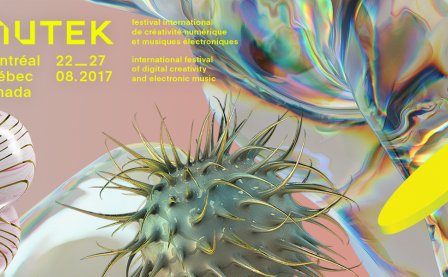Robert Henke's background in electronic composition is extensive enough to elicit jealousy on the part of even the most jaded audiophiles, and it's exceptionally impressive to boot. As one half of the Berlin-based ambient techno duo Monolake, Henke began his recording career experimenting with club music and the ambient electronic idiom. The composer's repertoire also includes CD mastering and production, sound engineering, composition, and recording of computer game soundtracks, and the development of music software (he is currently employed as a software technology developer with Ableton). As a sort of sonic Renaissance man, Henke demonstrates a studied and punctilious ear for the idiosyncrasies of audio technology and the nuances of raw sound used as source material.
On Layering Buddha, Henke has constructed ten ambient tracks based around sound loops from the cultish FM3 Buddha Machine, a simplistic and low-fidelity device that looks somewhat like an old-fashioned transistor radio. The FM3 Buddha Machine plays nine pre-set, pre-recorded loops that cannot be modified by the user of the device. In theory, each device, which is loaded with the same exact loops, plays back the sounds with slightly different results, as flaws in the manufacturing process (coupled with the device's general cheapness) render each device unique. Henke recorded loops from a single FM3 Buddha Machine using a bleeding-edge analog-to-digital converter to capture normally inaudible minutiae and anomalies in the sounds. The resulting samples were then layered, digitally manipulated, and otherwise modified to create a contiguous album containing the most extraordinary, unique ambient drone music to have been released in recent memory.
Layering Buddha has the overall effect of acting upon the listener as a moody, filmic, and contemplative soundtrack. Shadows seem to deepen, blues fade to charcoal gray, and tonal gradations shift toward the melancholic. If the purpose of the original FM3 Buddha Machine was to create an ambient atmospheric effect by playing back pre-recorded, trance-inducing, simplistic drones, then Henke has elevated the concept to a transcendent level by subverting, deconstructing, and then re-constructing the drones as an entirely different “otherness” that approaches the spiritual in its scope. Henke set out to dissect these drones into their constituent elements, which include the sounds themselves and, just as importantly, their tonal characteristics and ambient textural peculiarities. By reassembling these components in varying volumes, tones, pitches, and densities, Henke forces the listener to sift through waves of audio detritus and fractured snatches of captured sound as these granularities coalesce into recombinant sonic landscapes of varying intensity and grandeur.
Despite the electronic nature of both the source material and the recording process itself, Layering Buddha sounds surprisingly organic in nature. Beneath the cavernous drones of “Layer 001” resides a skittery, insectile cacophony that suggests the invisible movement of creatures deep underground. “Layer 007” employs a chorus of mechanical clicks that recall clockwork or other mechanical objects that sound far from synthetic in origin. Elsewhere on the album, however, Henke’s techno background reveals itself, as on the mutant strain of deep progressive house on “Layer 006.” Layering Buddha is without question worth the price of admission for the positively sublime “Layer 009,” which is haunting and captivating enough to be played on repeat indefinitely. It’s a striking and magnificent piece packed with unbridled emotional sonority. What’s perhaps most significant about Layering Buddha is the fact that, although the original device is markedly retrograde in terms of its basic operation and underlying architecture, it managed to produce sounds that, though simplistic in theory, were nonetheless utilized by Henke to craft an album of such remarkably (and pleasantly) disparate tracks. There’s a strange beauty within this singular recording that commands one’s attention at great length.
More about: Robert Henke



